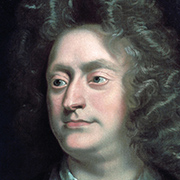As no early manuscript sources of Purcell’s “Dido and Aeneas” have survived, modern editions are forced to draw on later copies of the work that vary in a range of respects. Bärenreiter’s new edition opens up a fresh perspective on the opera.
Composer Henry Purcell and librettist Nahum Tate created “Dido and Aeneas” – an operatic retelling of Book IV of Virgil’s “Aeneid” – in the 1680s. A single copy of an early printed libretto survives (the new edition includes a facsimile), copies of which must have been provided at a performance of “Dido” in the late 1680s at the school for “Young Gentlewomen” in Chelsea. In 1700 (more than four years after Purcell’s death), “Dido” made its professional debut at the Lincoln’s Inn Fields Theatre, where it was integrated into a production of Shakespeare’s “Measure for Measure” (as documented in a printed wordbook), and there were further revivals in 1704 (as advertised in the London Daily Courant). No extant manuscript scores or parts correspond to “Dido’s” early performance history; only three individual songs can be found in sources dating from 1698 to c.1705.
The next mention of “Dido” comes seven decades later, in a 1774 concert program printed for the Academy of Ancient Music, a special title page emphasizing Dido’s featured status. Someone connected with the Academy must have located an early score, which evidently went missing again. Curiously, the Academy revered Purcell’s music yet had no qualms about altering it, effecting to bring it in line with contemporary musical tastes. Several late eighteenth-century manuscripts preserve the Academy’s adaptation of “Dido”. Fortunately, though, three scribes preserved the full measure of the work preserved in the early score, retaining music cut by the Academy. Their scores, known as the Tenbury, Nanki, and Tatton Park manuscripts, provide the foundation for the musical text of the opera. (They do not, however, provide the music for the prologue or for a chorus and dance at the end of Act II; these sections appear in the Chelsea libretto but were likely cut in 1704.)
In the annals of editing “Dido”, Tenbury has been given pride of place due to its replication of earlier notational conventions (for example, the use of flats and sharps instead of naturals), but a reassessment reveals scribal confusion – its copyist may have been an apprentice tasked with the job. Nanki has been seen as the outlier, partially in line with the altered Academy version, but it must be the forerunner of that version, its copyist responsible for updating the musical language. Only in the case of Tatton Park do we know the copyist’s identity, Philip Hayes, then one of England’s most prominent musicians and its greatest Purcell expert. The new edition of Dido is the first to make Hayes’s score the copy-text. Notably, Hayes took great care to display Dido’s distinctive continuity, for example, deploying single and double bars judiciously to show where the music flows on and where a short pause might be acceptable. This guided the organization of the movements in the new edition. He allowed minor melodic and rhythmic variants to stand rather than equalizing them (unlike the Nanki scribe and later editors), understanding that this was characteristic of Purcell’s music, and when he did step in as editor he seems to have taken, as musicologist Rebecca Herissone has put it, a “non-interventionist approach” aiming “to preserve the text intact.”
A goal of the new edition is to provide a reading of “Dido” that allows Purcell’s intentions – as understood by his advocate Hayes – to shine through. Those familiar with earlier editions will find some melodic and rhythmic variants new, for example, the close of Aeneas’s Act II recitative, at the words “but with more ease could die,” where a straight rhythm now follows a syncopated one, Purcell possibly giving us a sense here of Aeneas’s move from anguish to acceptance. In the first of the sorceress and witches’ scenes, the strings’ interjections appear in 6/8 time, as found in Tatton Park and Tenbury. Earlier editors have consistently provided triplets, but Purcell was certainly using compound time by the 1680s, and the incisive duple character of 6/8 better represents the intention here: the sorceress tells us that Dido and Aeneas are “in chase,” and the strings are mimicking hunting horns. These and other such changes seek to remove an accumulated layer, allowing performers and scholars to take a fresh view of Purcell’s masterpiece.
Robert S. Shay
(aus [t]akte 2023)



